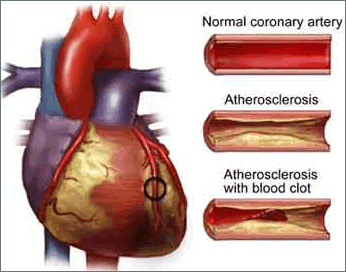By
Liz Highleyman
Previous
research has found that people with chronic
hepatitis C virus (HCV) infection have an elevated risk
for cardiovascular disease. While HCV has been linked to insulin
resistance or diabetes -- known risk factors for heart disease
-- it is also typically characterized by favorable blood lipid
levels.
In the present study, Aya Mostafa from AinShams University in
Cairo and colleagues looked at the effect of this paradoxical
risk profile on metabolism and atherosclerosis (hardening of
the arteries and build-up of plaque) in the setting of HCV infection
and clearance.

This
cross-sectional analysis included more than 1200 participants
in Egypt aged 35 years or older. Within this study population,
329 had chronic hepatitis C, 173 had cleared HCV infection,
and 795 were never infected with HCV; a subset of 192, 115,
and 187 participants, respectively, from the 3 groups underwent
ultrasound imaging.
The investigators evaluated presence of diabetes, fasting blood
glucose, lipid levels, and body fat deposition using ultrasound.
Carotid intima-media thickness (IMT), or width of the inner
lining of the carotid arteries supplying the brain, was used
as a measure of atherosclerosis.
Results
 |
Diabetes
was more common among participants with chronic hepatitis
C and cleared HCV infection (both with a prevalence of 10.1%)
than among those who never had HCV (6.6%; P = 0.04 for chronic,
0.08 for cleared). |
 |
The
amount of mesenteric or visceral fat was greater in people
with chronic hepatitis C (36.4 mm) and cleared infection
(37.8 mm) relative to those never infected (32.7 mm; P =
0.004 for chronic, < 0.0001 for cleared). |
 |
Low-density
lipoprotein (LDL) cholesterol levels were lower in the chronic
hepatitis C group (2.69 mmol/L; P < 0.001), but similar
in those with cleared infection (3.56 mmol/L; P = 0.4) and
those never infected (3.45 mmol/L). |
 |
Carotid
IMT did not differ significantly according to HCV infection
status, at 0.73, 0.71, and 0.71 mm, respectively. |
 |
After
adjustmenting for traditional cardiovascular risk factors,
however, IMT was greater in people with chronic infection
(0.76 mm) compared with never infected individuals (0.70
mm; P = 0.02). |
Based on these findings, the researchers proposed, "Hepatic
function normalization with HCV clearance may account for reversal
of favorable lipids observed with HCV infection." However,
they added, glucose levels and visceral fat accumulation "appear
less amenable to HCV resolution."
"These different cardiovascular risk patterns may determine
equivalent atherosclerosis risk by infection status," they
suggested. "However, once these factors were accounted
for, those with chronic infection had raised IMT, suggesting
a direct effect of infection."
Department of Community Medicine, Faculty of Medicine, AinShams
University, Cairo, Egypt; Department of Tropical Medicine, Faculty
of Medicine, Cairo University, Cairo, Egypt; Viral Hepatitis
Reference Laboratory, National Hepatology and Tropical Medicine
Research Institute, Cairo, Egypt; Institut Pasteur, Paris, France;
Department of Metabolic Medicine, Imperial College NHS Healthcare
Trust, London, UK; International Centre for Circulatory Health,
National Heart & Lung Institute, Imperial College NHS Healthcare
Trust, London, UK; Faculty of Medicine, Minia University, Minia,
Egypt.
7/30/10
Reference
A Mostafa, MK Mohamed, M Saeed, and others. Hepatitis C infection
and clearance: impact on atherosclerosis and cardiometabolic
risk factors. Gut (Abstract).
June 28, 2010 (Epub ahead of print).
